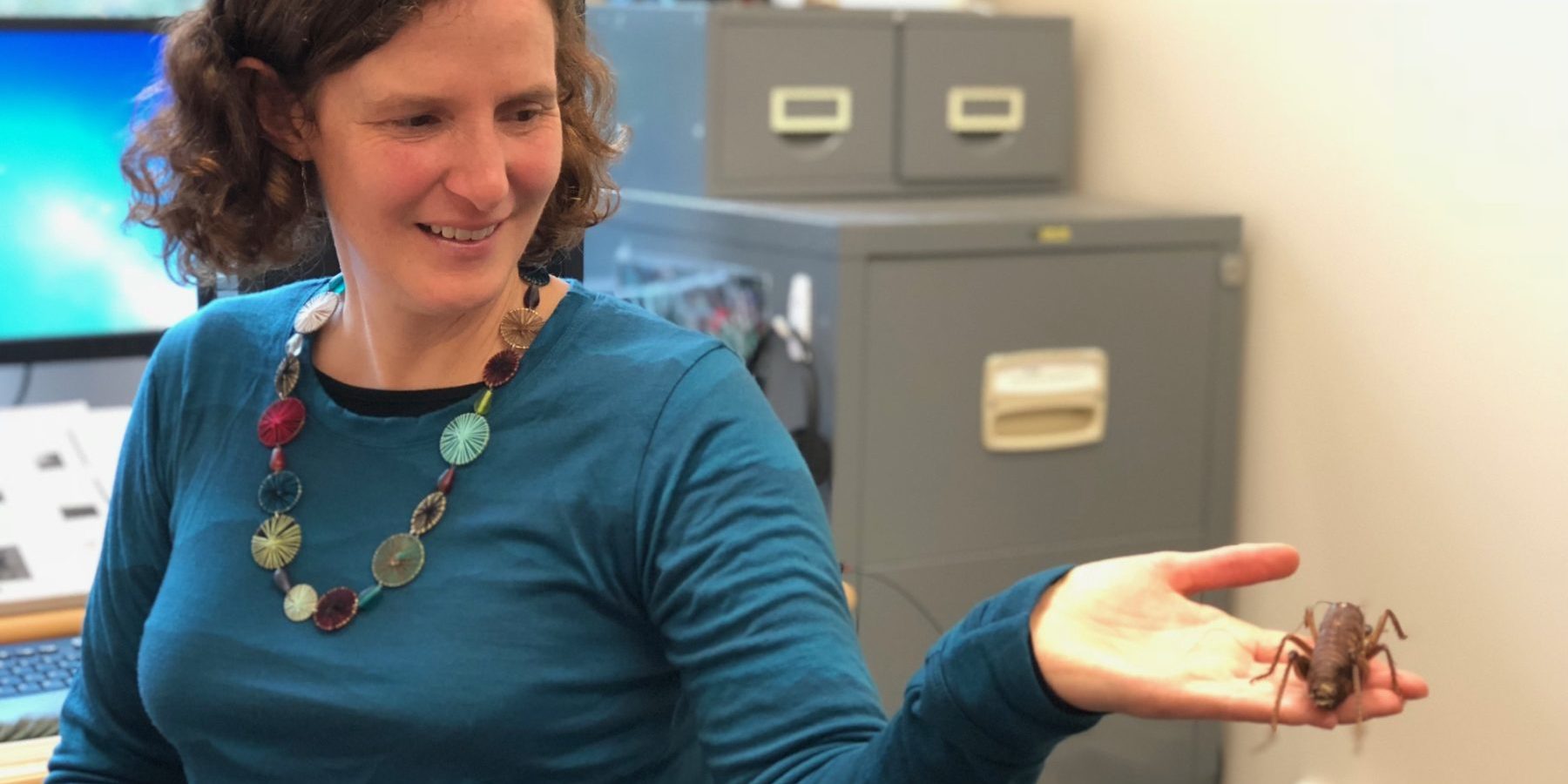Shining the spotlight on our iconic native wētā has been the heart of Dr. Corinne Watts’ scientific career.
Her research into the impact of predators, biocontrol agents and habitat change on our native invertebrates has informed successful relocation of wētā to sanctuaries (such as Zealandia and Maungatautari Ecological Island) and restoration strategies for major infrastructure projects (like Contact Energy’s Hauāuru Mā Raki windfarm and NZTA’s Mt Messenger SH3 road realignment). She has also unearthed several previously unrecorded species including Houdinia flexillissima (the world’s thinnest caterpillar) as well as four moths and several beetles yet to be named.
With a strong publication and presentation record, significant contributions to indicators for ecosystem health and guidelines for invertebrate relocation and monitoring, Dr. Watts is also an enthusiastic public educator, raising awareness about some of our most misunderstood creatures.
Dr. Corinne Watts
Manaaki Whenua Landcare Research
Environmental Science Award
Shining the spotlight on our iconic native wētā has been the heart of Dr. Corinne Watts’ scientific career.
Her research into the impact of predators, biocontrol agents and habitat change on our native invertebrates has informed successful relocation of wētā to sanctuaries (such as Zealandia and Maungatautari Ecological Island) and restoration strategies for major infrastructure projects (like Contact Energy’s Hauāuru Mā Raki windfarm and NZTA’s Mt Messenger SH3 road realignment). She has also unearthed several previously unrecorded species including Houdinia flexillissima (the world’s thinnest caterpillar) as well as four moths and several beetles yet to be named.
With a strong publication and presentation record, significant contributions to indicators for ecosystem health and guidelines for invertebrate relocation and monitoring, Dr. Watts is also an enthusiastic public educator, raising awareness about some of our most misunderstood creatures.





